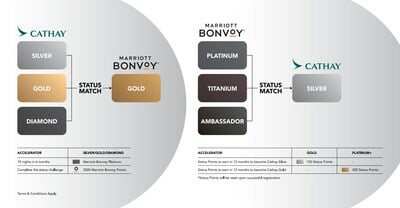As the U.S. airline industry lost tens of billions of dollars over the past 10 years, it also lost a tremendous number of employees.Nearly one in every four U.S. airline jobs disappeared in the 10 years that ended Dec. 31, and the largest airlines were among the hardest hit, according to new data.
The Bureau of Transportation Statistics says U.S. airlines employed 557,674 full-time and part-time workers at the end of 2009, down more than 170,000 from the end of 1999.
Employment at U.S. airlines peaked at 753,647 jobs in 2000 and has been on a steady decline since, except for a small rise in jobs in 2004 and 2007.
“The key thing is it isn’t coming from one source,” economics professor George Hoffer said. “It’s just a combination of a lot of things happening in the last decade. I think that’s how it got under people’s radar screen.”
The job loss was even more drastic among some major carriers:
•United Airlines Inc., which went through a Chapter 11 bankruptcy reorganization in 2002-06, is now less than half its 1999 size. At the end of 1999, its employment was just under 100,000. Ten years later, it employed 46,538.
•The number of jobs at American Airlines Inc. is down 26 percent, from 97,199 on Dec. 31, 1999, to 71,450 at the end of 2009. But that’s only if you don’t count Trans World Airlines Inc., whose employees joined Fort Worth-based American in a 2001 purchase.
Combined, the American and TWA workforce in 1999 totaled 118,171 employees. The 2009 number was down 46,721 over the 10 years, or 39.5 percent.
•Delta Air Lines Inc. and Northwest Airlines, which merged in 2008 after each went through bankruptcy reorganization earlier in the decade, showed a similarly steep drop in jobs.
Combined, Delta and Northwest employed 80,822 people at the end of 2009, down 49,088, 37.8 percent, from the 1999 total of 129,910 when they were separate.
•US Airways Inc., formed by the merger of the old US Airways and America West Airlines Inc. in 2005, shrank even more in percentage terms. US Airways had twice visited federal bankruptcy court to reorganize, first in 2002 and again in 2004 before merging with America West.
The two carriers in 1999 separately employed 56,679 workers. Ten years later, employment at the merged carriers was down 43.5 percent to 32,021 – a loss of 24,658 employees.
•Continental Airlines Inc., which neither merged nor went bankrupt in the prior 10 years, shrank by a relatively modest 18.1 percent. As of Dec. 31, it employed 36,132 people, down 7,959 from 1999.
Some expansions
Notwithstanding the job losses at those carriers, several big airlines added jobs during the same period.
Dallas-based Southwest Airlines Co. grew 24.7 percent as it added 6,947 jobs since 1999, finishing the year at 35,042. JetBlue Airways Corp., which began flying in 2000, now has 12,532 employees.
AirTran Airways Corp. more than doubled in size, going from 3,822 jobs in 1999 to 8,169 jobs in 2009. The workforce at Alaska Airlines Inc. grew slightly, from 9,657 to 9,910.
The government’s employment numbers include cargo carriers, including the largest U.S. airline, Fedex Corp. Fedex’s employment declined from 148,270 in 1999 to 139,737 in 2009, down 5.8 percent.
Hoffer, a Virginia Commonwealth University professor, and Air Transport Association spokeswoman Victoria Day said a number of factors contributed to the job losses.
“The economy, taxes, fuel prices, regulatory burdens, hassle factor at airports [and] security as well as the need to raise productivity through deployment of technology as well as other events over the past 10 years have taken their toll on the industry,” Day said.
“In large measure, the airlines’ post-2000 survival has been a result of an unprecedented post-World War II contraction, including a significant and painful reduction in the number of airline employees,” she said.
Why the shrinkage
Hoffer said one reason for the shrinkage is that a number of airlines disappeared as the result of mergers, like TWA, Northwest and the original US Airways, or from failure, like ATA Airlines Inc.
While some airlines were added to the mix, such as JetBlue and Virgin America Inc., Hoffer said, the number of airlines vanishing outnumbered the new entrants.
The disappearance of airlines has also led to a number of connecting hubs disappearing or shrinking drastically, Hoffer noted, such as in St. Louis (TWA), Cincinnati (after the Delta-Northwest merger) and Pittsburgh (US Airways).
Airlines reduced their workforces by outsourcing jobs, such as in reservations or catering, or flying, by increased usage of regional carriers that did not require as many employees. The carriers also benefited from technology changes in areas ranging from baggage sorting to the growth of online self-booking that reduced the number of employees, he said.
Air carriers also used the bankruptcy process to rewrite their labor contracts to achieve more productivity and get rid of excess workers, Hoffer said.
“You can do things in bankruptcy that otherwise would make front-page news because you would be negotiating with the unions and you’d have the threats of a strike,” he said. “But all of that is completely avoided in bankruptcy.”
WHAT TO TAKE AWAY FROM THIS ARTICLE:
- airlines peaked at 753,647 jobs in 2000 and has been on a steady decline since, except for a small rise in jobs in 2004 and 2007.
- Hoffer said one reason for the shrinkage is that a number of airlines disappeared as the result of mergers, like TWA, Northwest and the original US Airways, or from failure, like ATA Airlines Inc.
- “The economy, taxes, fuel prices, regulatory burdens, hassle factor at airports [and] security as well as the need to raise productivity through deployment of technology as well as other events over the past 10 years have taken their toll on the industry,”.






















